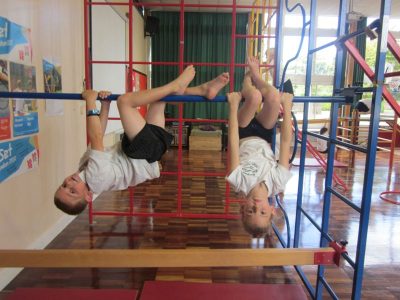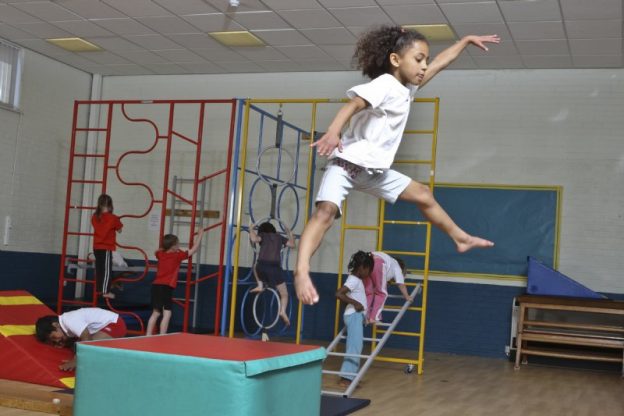When tutors come to watch students in the classroom, 2 of the lessons they want to see are Art and P.E – why?
Well there’s an easy answer to that – its because art and p.e are the 2 lessons that require the most organisation and also they are the one’s that can go wrong if you do not plan and execute them properly…and yes they are right !
I’ve banged on and on about organisation in your classroom and we will be able to see how its operating when you have these 2 lessons.
So rewinding on my blog posts….if you’ve been following what I have been advising then you will have monitors for both of these subjects – I think I recommended 4 monitors for both art and p.e. The simple logistics of having helpers for the equipment in both these subjects means that the lesson starts ….flows and closes far more easily.
For classes Reception and most of year 1 you will have the added problems of dressing and undressing – but hopefully you will have T.A support for this but of course this part of things is a learning experience in itself! If only parents would concentrate on teaching children to dress and undress themselves before they started school it would make life much easier….forget the reading / writing attempts (leave that to us) just get them dressing !
Lets look at the first one – P.E
P.E :- By using your monitors they can go and collect equipment from where it is stored and have it in the hall or on the field ready. If the lesson needs gymnastic “furniture” then you should have an arrangement with Y6 for some of their children to put it out for you.
Ok so your organisation challenges start here….
- Getting changed – Rec and Y1 will all generally change in the classroom together, but further up the school, girls and boys usually divide with 1 group in the cloakroom and the other remaining in the class. (I would recommend for female teachers girls stay in class and boys in cloakroom and vice versa). Your problem starts with how long it takes the class to change? Introduce from the start a 5 minute time limit…(you may wish to extend this for younger children). Use your large clock and keep the group that is out of the class informed on time remaining. As usual anyone not in the room and sitting down ready will have a time penalty taken from their playtime / dinner time…you may even say its a double penalty. But stick with it and you will find all your children will get the message and be changed and ready.
- Moving to the P.E location – I will deal with the aspect of moving children around the school in a separate blog. But suffice to say here that if you have monitors carrying small equipment with the class they should go at the FRONT of the line.
- Arriving at the location – this could be the school hall, the playground or the field. What you don’t want here is a class full of excited children rushing on to the area and charging about! So obviously the class has to stop and wait.
- Moving into the area – When the children are all waiting at the edge of the area for P.e then you need to instruct them where you want them to go when they get into the hall. You should have chosen in advance a place where they can all sit, or stand which is gathered around where you will be standing to give instructions. Be concise and make it easy. Don’t forget that the children will be excited and some may rush in and do a quick leap about before coming to the place you have asked them – just keep an eye on that but its not worth pulling up !
- Giving task instructions – You will have been taught that the first thing to do is a “warm up”….again be clear and concise its just to get the children moving so with experience you will be able to make it up as you go along…if you’re not too confident then write it down on a bit of card to remind your self what to do. As the warm up doesn’t usually stop to change movement then give clear commands and instructions in a loud voice. Children not following instructions should be simply reminded by saying their name – if they don’t listen then sit them at the side for a 5 minute penalty!

- After the warm up – either sit the children down where they are (spaces!) or bring them in around you to explain the activity. Once you have explained the activity then the children cannot start until you give the command.
- The activity – if your activity needs equipment then the equipment can be at the front next to you and call the children out in groups. The children then return to their places and sit down and wait to start. Once you have started the activity then move around the area talking to the children and helping with skills or positioning etc. Keep an eye on all the children and again simply call the name of any children getting “too enthusiastic”.
- Keeping order …Individuals– In my teacher training it was frowned upon to use a whistle in P.e. We were told to use either a handclap or voice….even now I wince slightly when I hear the loud (and sometimes desperate, blowing of a whistle). The secret to keeping order is to be constantly watching the lesson and identifying any children who start to lose concentration or become off task. The initial intervention is, as I have said, to call out the child’s name…this will usually have a calming effect as he/she realises that they are being watched. If this continues or a member of the class becomes too silly then sit them at the side for 5 minutes. Personally I would only do this twice…a third time was for the rest of the lesson and also a talk a playtime to discuss things!
- Keeping order …Class – As you move around the area make sure you are commentating on the success or failure in the given task. Now here’s the little secret. If you allow the activity to go on too long the children will become bored through repetition. So stop the action…sit everyone down and “we can take a look at….” or ” I have seen lots of mistakes on…this is how to correct”. This has the effect of stopping everyone, making everything quiet, you are in front and in charge and also you get the chance for input and intervention. When you have done this set the action back on again. It can be repeated 2 or 3 times or used to change activities or “stations”.

- Finishing off… You should be aiming to finish your lesson between 5 – 10 minutes before the timetabled lesson end. This may of course be longer for the younger children. Again sit down and talk through what you have been doing followed by a little bit of stretching to complete the lesson. Small equipment can be brought to the front to be put into boxes bags etc but do this progressively by calling children out in groups of 5 or 6 at a time – the children going to sit back down when this is done. When everyone is ready then ask the children to line up by “the door – the gate – a point at the playground edge.”
- Moving back to Class… – monitors carrying equipment should again be at the front. If you have used mats or benches then these should have been put away BEFORE you left the hall. You should NOT leave children in the hall unsupervised to put things away.
- Changing back… this is simply the reverse of the action for getting ready for the lesson. Depending on where in the timetable the lesson is sited then you may or may not need to use a timed approach !
Lots to think about but really when you get your approach right you will be able to apply it every time and the children will get used to what is expected of them.
Have fun and lets get active !
Primary Practice would like to invite you to join our NQT and trainee teachers Facebook group https://www.facebook.com/groups/1347401775298840/?ref=bookmarks
Charles


